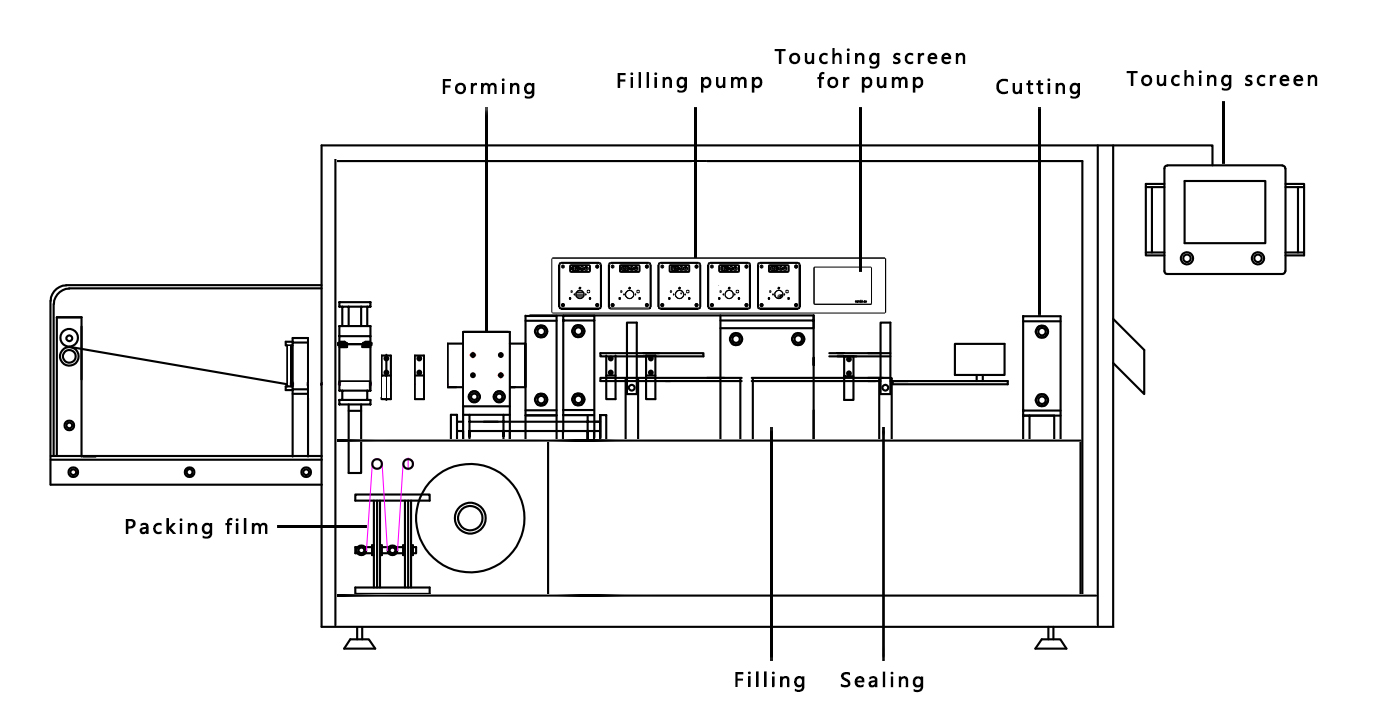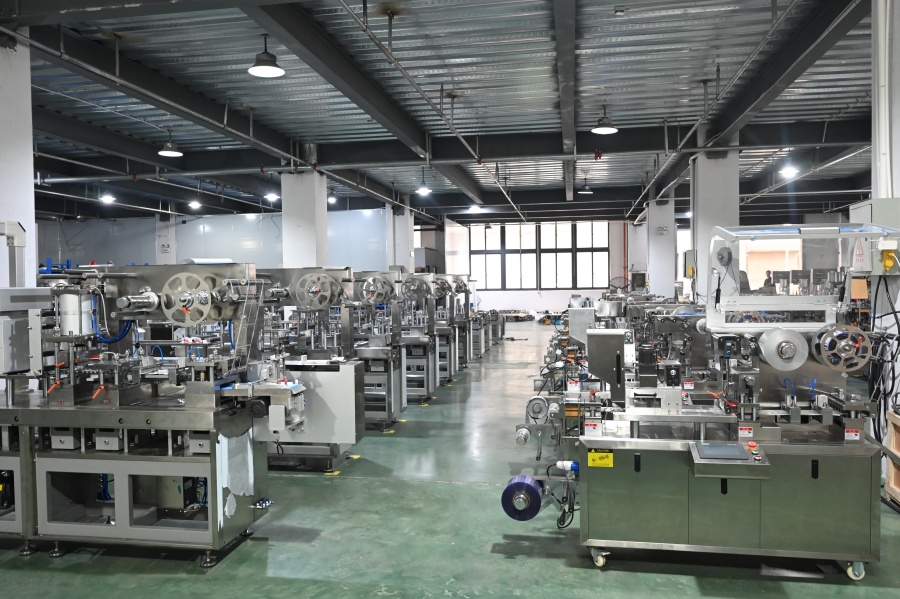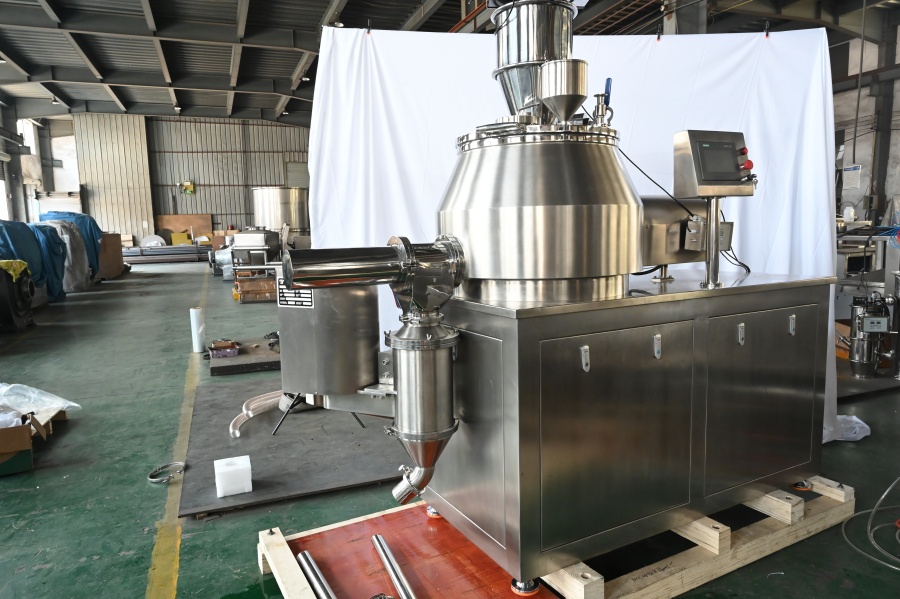Have you ever wondered how tiny glass ampoules are filled and sealed so precisely, without a single drop wasted?

In the pharmaceutical world, this process is a big deal. Ampoules safely hold injectable medicines, ensuring each patient receives the exact dosage in a sterile, hygienic container.
This entire process is handled by ampoule-filling and sealing machines, which automate every step. They ensure each dose is accurate, sterile, and securely sealed. It’s all about safeguarding the medicine, protecting the patient, and upholding the manufacturer’s reputation.
Let’s take a closer look at how these machines work.
What Is an Ampoule Filling and Sealing Machine?
An ampoule filling and sealing machine is a specialized piece of equipment. It is used to automatically fill liquid medicines into small sealed glass containers called ampoules. These machines handle the entire process in a single, continuous flow.
This ensures the contents remain sterile, safe, and protected from contamination. They are widely used in the pharmaceutical, biotech, and cosmetic industries for products like injectable drugs, vaccines, essential oils, and serums.
Key Components of an Ampoule Filling and Sealing Machine
Before we jump into how these machines work, it helps to know what’s inside them. These components include:

1. Hopper & Liquid Tank
The hopper or liquid tank is where the product is stored before it is filled into the ampoules. This tank is made from materials that are safe for pharmaceuticals, like stainless steel, to prevent contamination.
2. Ampoule Feed System
This system organizes and delivers empty ampoules to the filling section. This system often uses vibrating trays, conveyors, or rotatory wheels to ensure each ampoule is correctly positioned.
3. Filling Nozzles
These are precision tools that transfer liquid from the tank into each ampoule. Modern machines use stainless steel or other sterile materials for these needles, which are designed to prevent dripping or spillage.
4. Sealing Station
Once filled, ampoules need to be sealed immediately to protect the contents from contamination. The sealing station uses heat or flame to melt the glass tip and close it. The process must be quick and precise to avoid overheating or damaging the product inside.
How an Ampoule Filling and Sealing Machine Works
Understanding how these machines work can make the process seem much less mysterious. Let’s walk through the process from start to finish.
Step 1: Feeding Ampoules into the Machine

Empty ampoules are automatically aligned and guided into position by the ampoule feed system, ensuring precise placement for filling.
Step 2: Pre-Sealing and Opening Station

Through the conveyor belt, the ampoules go through a pre-sealing and opening station, where the cover is opened for product filling.
Step 3: Filling Ampoules with the Product

The machine’s precision filling needles or nozzles dispense an exact volume of liquid into each ampoule, preventing overfilling or product wastage.
Step 4: Sealing the Ampoules

Filled ampoules move to the sealing station, where a high-temperature flame or heat source melts and closes the neck. This creates a sterile and airtight seal.
Step 5: Quality Checks

In the end, built-in sensors detect any misaligned ampoules, underfills, or defects. This way, the products consumers get are correctly filled and sealed. These machines also have safety systems that stop the machine if an error occurs.
Features and Benefits of Ampoule Filling and Sealing Machine
An ampoule filling and sealing machine combines precision technology with automation to meet strict pharmaceutical standards. Below are the main features explained in detail.
1. Automatic Sealing
After filling, the ampoules are sealed using heat or flame without human contact. This prevents contamination and preserves the sterility of the medicine. A secure seal also extends the product’s shelf life.
2. High Production Speed
These machines can process hundreds to thousands of ampoules per hour. Rapid output is crucial for pharmaceutical companies to meet the increasing demand. High speed also reduces operational costs by improving efficiency.
3. Compact and Hygienic Design
Built with stainless steel and smooth finishes, the machine is easy to clean and maintain. Its design prevents dust or residue from collecting, making it compliant with GMP standards. Remember, cleanliness is vital when handling medicines.
4. Safety Controls
Equipped with sensors, alarms, and automated shutdown systems, the machine reduces risks during operation. These features prevent overfilling, glass breakage, and product loss. As a result, both operators and products remain safe.
Three Types of Ampoule Filling and Sealing Machines
Not all ampoule filling and sealing machines are built for the same scale or production. Depending on your needs, budget, and output requirements, you can choose from three main types:
1. Manual Machine
Manual ampoule filling and sealing machines are designed for small-scale operations. They require the operator to handle most of the process, including feeding ampoules and controlling the fill and seal manually.

These machines are slow but cost-effective, making them ideal for research labs, hospitals, or companies testing new products.
2. Semi-Automatic Machines
Semi-automatic machines strike a balance between manual control and automation. Operators still feed ampoules into the system, but the filling and sealing are performed automatically.

This setup increases speed and consistency while keeping costs lower than a fully automated line. Semi-automatic models are often used by medium-sized pharmaceutical companies.
3. Fully Automatic Machines
Fully automatic ampoule filling and sealing machines are designed for high-speed, large-scale manufacturing. They can handle thousands of ampoules per hour with minimal operator intervention.

These machines automatically feed, fill, seal, and eject finished ampoules, all while maintaining precise dosage accuracy. They are ideal for mass production in pharmaceutical plants.
Factors to Consider When Choosing an Ampoule Filling and Sealing Machine
Choosing the right ampoule filling and sealing machine isn’t just about picking the fastest model. Here are the key factors you should weigh before making a decision:
1. Production Capacity
Start by determining how many ampoules you need to process per hour. Small research labs might be fine with a manual or semi-automatic machine, while pharmaceutical plants producing thousands daily will require a fully automatic high-speed system.
2. Type of Liquids
The viscosity, chemical composition, and sterility requirements of your liquid will influence the choice of machine. For example, thick or highly viscous solutions may require specialized filling nozzles, while sensitive or reactive chemicals might need inert gas flushing or gas sealing.
3. Level of Automation Needed
Decide whether you need manual, semi-automatic, or fully automatic operation. Higher automation reduces labor needs and increases speed, but it also raises the initial cost. So, if you have the budget, full automation might be the best option.
4. Maintenance Requirements
Downtime can be costly, so opt for a machine that is easy to clean, service, and maintain. Check for availability of spare parts, technical support, and training for your staff. Machines with modular components often have faster turnaround times for repairs.
Invest in the Right Ampoule Filling and Sealing Machine
Whether you run a small lab or a large manufacturing plant, the right equipment ensures precise dosing, airtight sealing, and compliance with industry standards.
If you’re ready to take your production to the next level, explore ampoule filling and sealing machines that match your exact needs and budget. The sooner you upgrade, the faster you’ll see better productivity and consistent product quality.
Don’t let outdated equipment hold you back.
FAQs
1. What should I do if my ampoules keep breaking during sealing?
If ampoules break, check the flame or heat setting. It may be too hot or uneven. Poor glass quality or improper ampoule alignment can also cause cracks. Make sure the ampoules are held securely during sealing and that the machine is calibrated correctly.
2. What liquids should never be filled in ampoule machines?
Avoid filling liquids that can damage glass, such as strong hydrofluoric acid or highly reactive chemicals. Some very viscous or crystal-forming solutions may clog the filling nozzles. So, always check the chemical compatibility of your liquid before use.
3. What signs show my ampoule filling machine needs servicing?
Signs your ampoule filling machine needs servicing include slower operations, uneven filling, broken seals, or increased ampoule breakage. Strange noises, vibration, or overheating are also red flags. If the sealing flame becomes irregular or the filling accuracy drops, stop production and schedule maintenance.




